For English version click on “BEITRAG LESEN/READ THE POST” and then scroll to bottom
Nachdem wir alles Administrative an der YPF-Tankstelle erledigt haben, geht es auf zu den Walen. Laut verschiedenen Quellen ist der Strand El Doradillo, der auf dem Weg Richtung NP Peninsula Valdes liegt, einer der besten Beobachtungspunkte. Von unserem Besuch 2019 wissen wir, dass die 2. Zufahrt zum Strand für uns nicht so gut geeignet ist. Unser Ziel ist daher die 3. Zufahrt. Als wir aber schon kurz vor der 1. Zufahrt springende Wale in der Ferne sehen, kann Ralph es nicht abwarten und biegt direkt ab. Wir finden einen Stellplatz und richten uns erstmal gemütlich ein. Geschätzt zwischen 50 und 80 Wale sehen wir in der Bucht. Was uns am meisten überrascht ist, dass man sie auch sehr gut hören kann, wie sie miteinander kommunizieren. Am Wochenende kommen viele Familien tagsüber hier hin und auch kleinere Tourbusse kommen regelmäßig vorbei und spucken ihre Ladung aus. Sonntagnacht fängt es an zu regnen und am Montag steht alles unter Wasser. Da die Vorhersage für die nächsten Tage auch nicht gut ist, beschließen wir auf den ACA-Campingplatz zu gehen. Die Straße Richtung Stadt ist zum Teil wie Schmierseife. Daher überrascht es uns auch nicht, dass sie gesperrt ist. Nur der Ranger war überrascht, woher wir denn kamen. Nach 3 Regentagen auf dem Campingplatz fahren wir in die Stadt und bringen unsere Wäsche weg. Hier treffen wir dann auch auf Betina und Christian, mit denen wir schon per Facebook und WhatsApp Kontakt hatten. Die beiden Parkplätze am Ausflugspier sind wieder gut mit Wohnmobilen belegt. Auch das Pepamobil, das wir 2019 an der Ruta 40 getroffen haben, ist da. Als am Freitag die Straße wieder freigegeben wird, fahren alle wieder raus zu den Stränden. Da wir unsere Wäsche frühestens um 19h abholen können, bleiben wir noch bis Samstag und fahren diesmal ein Stück weiter bis ca. 4 km hinter den Strand Las Canteras. Hier sind auch Hunde erlaubt und das Pepamobil, Betina & Christian und Thomas aus Celle bzw. Namibia sind auch da. Irgendwann reisen Thomas und das Pepamobil ab, dafür gesellen sich dann Petra & Marcus und Karola & Hans zu uns. Betina & Christian stellen bei einer Fahrt in die Stadt fest, dass Sie Probleme mit den Federn haben (die Zufahrt zum Strand ist schon etwas ruckelig) und stehen dann 2 km weiter, wo sie einfacher hinkommen. Inzwischen sind nicht mehr so viele Wale in der Bucht, dafür kommen Sie aber viel näher ans Ufer. Hier verbringen wir noch 3 weitere Wochen mit netter Gesellschaft. Alle 5-6 Tage fahren wir in die Stadt, um unsere Vorräte aufzufüllen und das Angebot des Cafés Manjares zu genießen. Die meiste Zeit verbringen wir aber am Strand und bei der Beobachtung der Wale. Häufig sind es Muttertiere mit ihren Kälbern, aber wir denken, dass sich auch einige Wale hier noch zur Paarung getroffen haben. Es ist immer wieder faszinierend, die Tiere zu beobachten. Da sie hier häufig von Möwen attackiert werden, haben sie jedoch ihr Tauchverhalten geändert und winken beim Abtauchen nicht mit der Schwanzflosse. Aber wir kommen immer wieder mal in den Genuss, einen Wal zu beobachten, der mit der Schwanzflosse winkt. Wir vermuten, dass hauptsächlich Jungtiere springen und mit der Schwanzflosse winken. Mitte Oktober machen wir uns dann aber auch wieder auf und fahren noch ein Stück Richtung Süden. In Gaiman übernachten wir bei den Bomberos und gönnen uns eine walisische Tea Time. Mit einem kurzen Abstecher zur Mühle in Delavon geht es dann auf der RN25 Richtung Westen. Der erste Abschnitt ist noch eher trist und langweilig aber schon am Abend sehen wir die ersten Berge. An der Tankstelle in Las Plumas hören wir Lautsprecherdurchsagen und entdecken, dass ein Stück weiter gerade ein Rodeo stattfindet. Da wir sowieso nicht mehr weiterfahren wollten und es noch früh ist, lassen wir uns das Schauspiel natürlich nicht entgehen. Kurz beobachten wir Männer bei einem Wurfspiel, dessen Regeln wir aber nicht verstanden haben. Dann geht es wieder mit dem Einreiten von jungen, wilden Pferden weiter. Es geht aber nicht darum, wer am längsten auf dem Pferd bleibt. Nach einer gewissen Zeit ertönt eine Glocke und dann werden die Reiter vom Pferd geholt, falls dieses sie nicht schon vorher abgeworfen hat (was aber nur 2 x passiert ist). Am nächsten Tag stoppen wir an einem Punkt, an dem alte Felsmalereien zu sehen sind und fahren noch bis kurz vor Paso del Indios. Gegen Mittag des nächsten Tages biegen wir auf die RP12 ab. Darüber berichte ich im nächsten Beitrag.
English Version (no translation Geman text)
After we are done with all the administrative stuff at the YPF gas station, we take off to see the whales. According to various sources, El Doradillo beach, which is on the way towards the Peninsula Valdes NP, is one of the best observation points. From our 2019 visit, we know that the 2nd access to the beach is not really suited for us. Therefore, our destination is the 3rd access. But when we see jumping whales in the distance just before the 1st access, Ralph can’t wait and turns in directly. We find a place and settle in for the time being. We see approximately between 50 and 80 whales in the bay. What surprises us most is that you can also hear them very well communicating with each other. On weekends many families come here during the day and also smaller tour buses come by regularly and spit out their cargo. Sunday night it starts to rain and on Monday everything is flooded. Since the forecast for the next few days is not good, we decide to go to the ACA campground. The road towards the city is partly like soft soap. Therefore, we are not surprised that it is closed. Only the ranger was surprised where we came from. After 3 rainy days on the campground, we drive into town and hand off our clothes at a laundry. At the parking we meet Betina and Christian, with whom we had already been in contact via Facebook and WhatsApp. The two parking lots at the pier are again well occupied with motorhomes. Also, Pepamobil, which we met in 2019 at Ruta 40, is there. When the road is reopened on Friday, everyone goes out to the beaches again. Since we can’t pick up our laundry before 19h, we stay until Saturday. This time we drive a bit further until a beach access about 4 km behind the Las Canteras. Dogs are also allowed at this strip of the beach and Pepamobil, Betina & Christian and Thomas from Celle or Namibia are also there. At some point Thomas and Pepamobil leave, but Petra & Marcus and Karola & Hans join us. During a drive into town Betina & Christian realize that they have problems with the springs (the access road to the beach is a bit jerky) and then move 2 km further, where they can access the beach more easily. In the meantime, there are no longer so many whales in the bay, but you get much closer to the shore. Here we spend 3 more weeks with nice company. Every 5-6 days we go to town to replenish our supplies and enjoy the delicious cakes at Cafè Manjares . But most of the time we spend on the beach watching the whales. Often there are mother whales with their calves, but we think that some whales still met here for mating as well. It is always fascinating to watch the animals. However, since they are often attacked by seagulls, they have changed their diving behavior and do not wave their tail fin when diving down. But every now and then we have the pleasure to observe a whale waving its tail fin. We assume that mainly young animals jump and wave with the tail fin. In the middle of October, we finally leave as well and drive a little bit south. In Gaiman we stay at the Bomberos for the night and treat ourselves to a Welsh Tea Time. With a short detour to the mill in Delavon we head west on RN25. The first section is rather dull and boring but already in the evening we see the first mountains. At the gas station in Las Plumas we hear loudspeaker announcements and discover that a rodeo is taking place a little further on. Since we don’t want to continue anyway and it is still early, we don’t miss the spectacle. We watch men playing a throwing game for a while, but we don’t understand the rules. Then the breaking of young, wild horses continues. However, it is not about who stays on the horse the longest. After a certain time, a bell sounds and then the riders are taken off the horse, if the horse has not thrown them off before (which happened only 2 times). The next day we stop at a point where old rock paintings can be seen and continue until just before Paso del Indios. We turn onto RP12 around noon of the next day. More about this part of our trip in the next post.










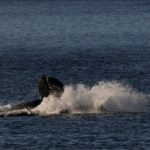
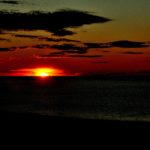
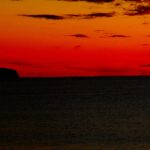

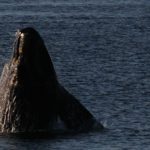




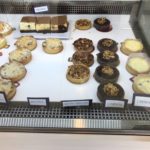








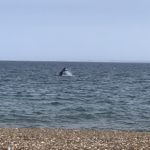



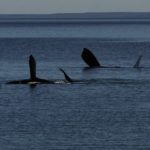













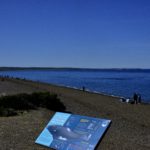
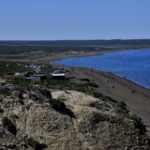
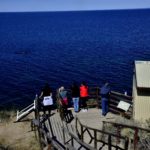
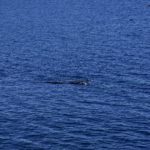




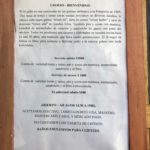

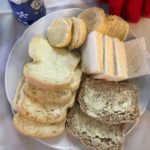

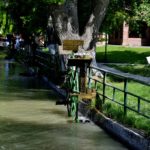















Hallo Ute, hallo Ralph,
es war wieder ein toller Beitrag.
Meine Tochter und ich, wir haben vor Allem viel Spaß an den Bildern gehabt.
Weiter so, wir freuen uns
Rolf